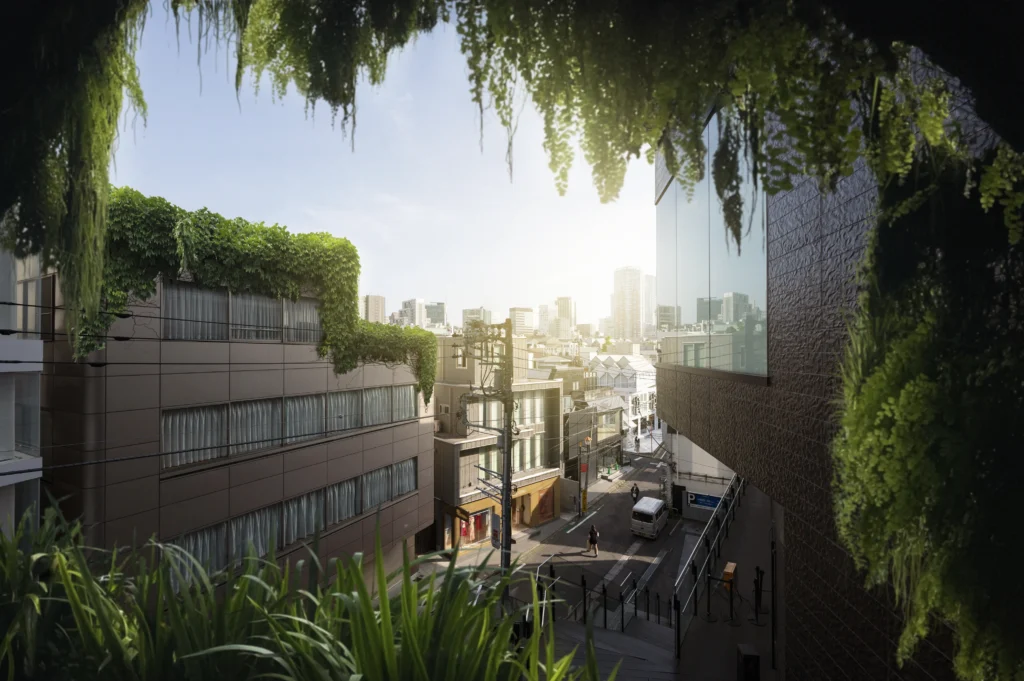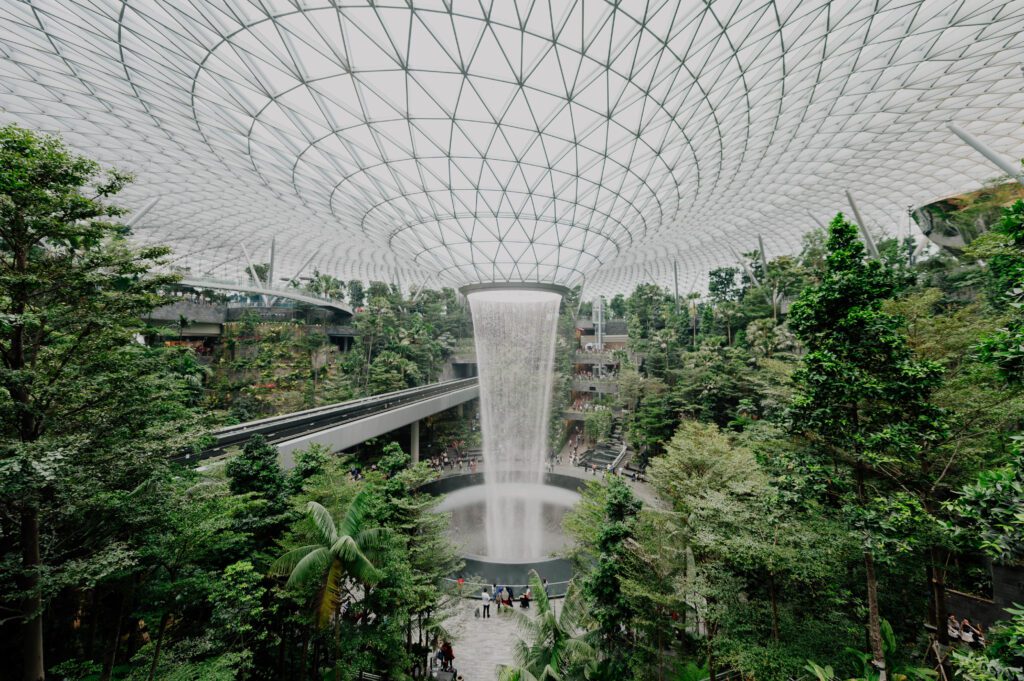How High Rise Forests Are Transforming City Life
Cities today are growing fast, but with that growth comes problems like pollution, heat, and less space for nature. A new idea is rising above the concrete walls: high-rise forests. Also known as vertical gardens, these green skyscrapers bring trees, plants, and wildlife back into urban spaces. More than just beautiful buildings, they clean the air, cool the streets, and create healthier places to live. Let’s explore how these living towers are shaping the future of city life.
What Are High-Rise Forests?
High-rise forests, or vertical forests, are innovative buildings that aim to reintroduce nature into densely populated cities. Rather than having plain walls and rooftops, these towers are adorned with trees, shrubs, and plants that thrive on balconies and terraces. The concept is straightforward: enhance urban environments by blending architecture with living nature.
A prime example is the Bosco Verticale in Milan, Italy. Opened in 2014, these two residential towers house over 900 trees and nearly 20,000 plants. Together, they function as natural air purifiers, absorb pollution, and offer shelter to birds and insects.
The architects behind these projects envisioned them as an alternative to traditional suburban living. Incorporating green spaces directly into tall buildings allows people to stay connected with nature while remaining in the city. Roof gardens, shaded terraces, and plant-covered walls not only promote a healthier lifestyle for residents but also help wildlife flourish in urban areas.
Why Do Cities Need High-Rise Forests?

Cities are expanding every day, and with that growth come challenges such as pollution, heat, and a lack of green spaces. This is where high-rise forests play an important role. They offer not only beauty but also real solutions for urban problems.
1. Cleaner Air for Everyone:
Urban areas often suffer from air filled with harmful gases released by cars and factories. However, trees on buildings naturally absorb pollutants such as carbon dioxide and release fresh oxygen. As a result, a single vertical forest can remove tons of pollution each year, improving the air quality for thousands of residents.
2. Cooler Streets in Summer:
Concrete and asphalt trap heat, which creates the urban heat island effect. In addition, air conditioners exacerbate the problem by releasing hot air outside. However, high-rise forests help reduce this effect. Plants on these buildings provide shade and release moisture into the air, cooling the environment. As a result, streets become cooler—sometimes by as much as 5°C—making summers more comfortable for everyone.
3. Improved Mental Health:
Living in cities can be stressful, but access to green spaces has been proven to reduce anxiety and boost mood. High-rise forests bring nature right to people’s doorsteps, offering peaceful balconies and terraces filled with trees. As a result, residents feel calmer and more connected to the environment, all while staying within the city.
4. More Wildlife in the City:
Urban development often destroys the natural habitats of birds, bees, and butterflies. However, vertical gardens help bring biodiversity back into the city. They offer food and shelter for various species, allowing cities to strike a balance between urban growth and the natural world.
5. Energy Efficiency:
Plants are not just decorative; instead, they act as natural insulators. In summer, they cool buildings by blocking sunlight, while in winter, they help trap warmth. As a result, energy use is reduced, and people spend less money on electricity bills.
6. Beautiful, Sustainable Living:
People are increasingly choosing homes that combine modern comfort with environmental care. Moreover, high-rise forests raise property values and prove that eco-friendly design can also be stylish and practical.
From Vertical Forests to Vertical Cities: The Bigger Benefits:

High-rise forests are just the beginning of a greener urban future. As this idea evolves into the concept of vertical cities, the benefits grow even greater. Rather than cities expanding endlessly outward, vertical planning focuses on building upward, creating space for nature, people, and sustainable design. This approach not only preserves land but also enhances urban living in harmony with the environment.
Better Use of Space:
As populations grow, cities often spread into farmland and natural habitats. However, vertical cities help preserve land by creating compact, high-rise communities. As a result, more space remains available for agriculture, forests, and wildlife, allowing urban development to coexist with nature.
Energy Efficiency on a Larger Scale:
Vertical cities are designed with eco-friendly systems, ranging from renewable energy to smart water recycling. In addition, when homes, offices, and services are close together, people use less energy for transport and daily needs.
Healthier Urban Lifestyle:
Just like vertical forests reduce stress with greenery, vertical cities promote healthier living by combining green buildings, parks, and walkable spaces. Moreover, with less traffic and pollution, they lead to cleaner air and an overall better quality of life.
Climate-friendly growth:
Traditional urban sprawl increases emissions and resource use. On the other hand, vertical cities reduce waste, lower carbon footprints, and foster sustainable growth. Therefore, they demonstrate how urban development can help fight climate change, rather than contribute to it.
A Vision for Greener Cities:
When we think about the future of cities, most people imagine taller skyscrapers and busier streets. However, high-rise forests give us a different picture. Instead of endless concrete, we can see towers covered in trees and plants, blending nature with modern living.
In addition, these vertical forests are not just for decoration. They create a healthier balance between people and the environment. For example, they make the air cleaner, provide shade on hot days, and give wildlife a chance to return to urban areas. As a result, city life becomes more comfortable and sustainable.
Moreover, high-rise forests show us that climate action can happen right where we live. Rather than waiting for large-scale changes, these projects prove that eco-friendly design is possible at the neighborhood level. In this way, every building can contribute to the solution in the fight against climate change..
Therefore, the vision of greener cities is more than a dream—it is a practical path forward. If more urban planners and governments invest in vertical gardens, the future skyline will not only be taller but also greener, healthier, and more livable for everyone.
What Can You Do?
Big urban projects like high-rise forests require architects, planners, and governments to take the lead. However, that does not mean individuals cannot play a part. In fact, small actions can also support the vision of greener cities.
For example, you can start by adding more plants to your own living space—whether it’s a balcony, rooftop, or even a small window garden. In addition, supporting eco-friendly housing projects and choosing sustainable buildings when possible encourages developers to invest in green architecture.
Moreover, spreading awareness is a powerful tool in itself. Talking to neighbors, joining local green groups, or simply sharing the benefits of vertical gardens online all help foster a culture that values eco-friendly design. As a result, cities are more likely to develop in ways that benefit both people and the planet.
Therefore, even if you’re not the one designing the next skyscraper, your choices still make a difference. Every small step brings us closer to cities that are not only bigger but also healthier and more sustainable.
High-rise forests are not just an architectural trend; they’re a solution to some of the biggest challenges facing modern cities. From reducing pollution to boosting mental health, these vertical gardens demonstrate how design and nature can work hand in hand. Moreover, they prove that climate action is possible right where we live.
In the coming years, as more cities adopt this idea, urban life will no longer be defined only by concrete and glass. Instead, it will be greener, cooler, and more sustainable. Therefore, supporting high-rise forests today means investing in a healthier future for generations to come.
FAQs
Q1. How do high-rise forests help fight climate change?
Ans. They absorb carbon dioxide, reduce the urban heat island effect, and support biodiversity. Additionally, they help lower energy use by cooling buildings in the summer and trapping warmth during the winter.
Q2. Are high-rise forests only for large cities?
Ans. Not at all. While high-rise forests are most common in large urban areas, smaller towns and even residential complexes can adopt similar designs to create greener living spaces. It’s all about integrating nature into the built environment, no matter the scale.
Q3. Do high-rise forests require special maintenance?
Ans. Yes, high-rise forests do require regular care, including irrigation systems and pruning, to ensure the plants stay healthy and thrive. Proper maintenance is essential for their long-term success, but with the right systems in place, it becomes much more manageable.
For More Articles https://www.climatechallange.com/what-will-happen-if-amazon-forest-is-destroyed/


